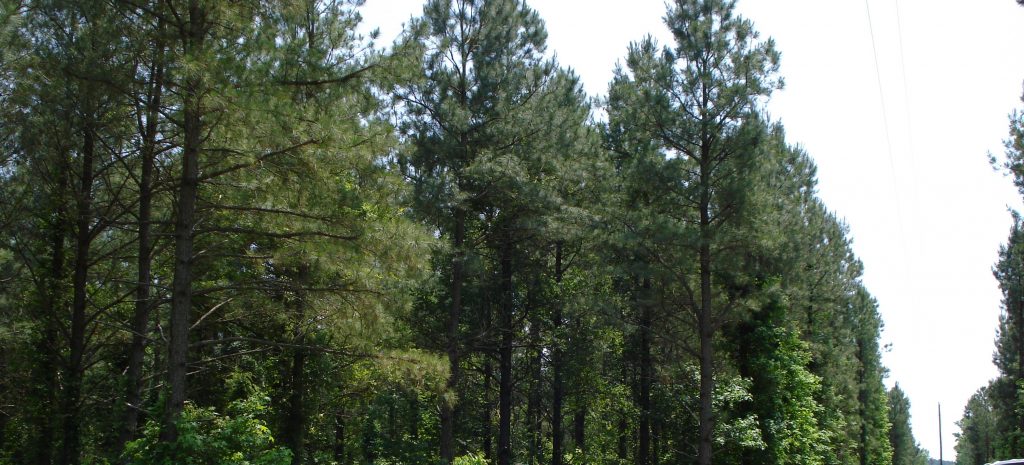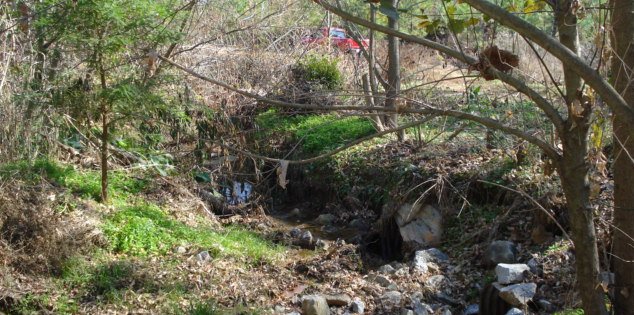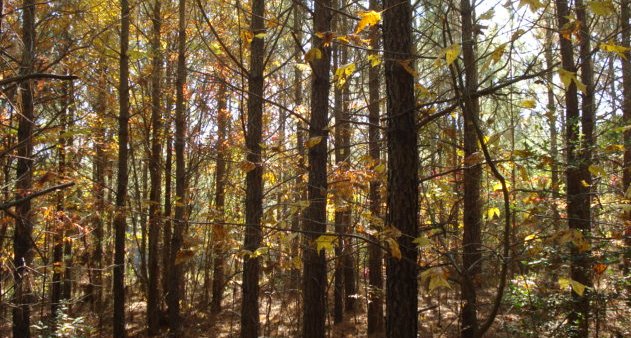Carbon dioxide makes plants grow faster and stronger, so presumably higher levels of CO2 in the air as a result of burning fossil fuels would make forests grow faster. I was particularly interested in an experiment done at Duke University where they dosed a loblolly pine plantation with elevated levels of CO2. Duke is not far from my forests and they were experimenting with the same species as I have on similar soils in a similar environment.
Below are pines at a Virginia Tech experimental plot testing biosolids at the Peidmont station near Blackstone, VA. The trees were not actively managed before the biosolid experiments.

The studies showed that the pines did indeed grow faster and stronger. They were also less prone to damage during ice storms, which is a factor that limits loblolly growth farther north. The forest did relatively better during dry years. The hypothesis is that the limiting factors in the growth of the pines are nutrients such as nitrogen, which is in deficit on much of the pine land in the Southeast. In dry years, however, the trees don’t bump up against those factors since they are growing more slowly because water is the limiting factor. When rain is plentiful they are reach the limits of the site’s nutrients and the extra CO2 isn’t much of a benefit.
Everybody knows that forest soils in region are deficient in N and P as well as trace minerals. Pine forests often sit on land that was used for cotton, corn or tobacco. These crops depleted the soils, which were old soils anyway. Building the soils is one of our tasks.
It seems to me that we have a solution to this problem if we just fertilize better. This is something we might want to do anyway. I think this is a place for biosolids. I really don’t understand why we cannot balance these things better. I read about the problems of disposing bulk wastes and sewage from municipalities and commercial farms. In Virginia and NC, we have a lot of chicken and hog operations. They produce too much crap; our soils could use it and the trees would grow better and faster. I am going to try to figure out why this is not being done more widely. I suspect it is misguided regulation coupled with plain inertia.
Below is one of my failures, or maybe a single success. I planted twenty bald cypress. As far as I can tell, only one survived. I want to get back into the swamp when the ground freezes this winter to check on the overall progress. I was in Iraq last winter, so I missed that opportunity then. The tree you can see in the picture is thriving. The others not. I don’t know what I did wrong. My guess is that there was too much competition. There are a lot of box elders that overgrew them. This one is near the road, so I can get at the brush regularly. BTW – the bald cypress is the green one on the left.

Anyway, the Dept of Energy, which was funding the Duke studies, is pulling the plug on them. You can find information re at links here, here & here. It was that news that made me think about this subject. I am a little unhappy about this outcome, although I am not sure how much more could be gained anyway. There are too many variables. You would have to try to fertilize some, make sure others had lots of water etc. and by the time you figured it out the results would probably be OBE’D. Good forestry practices and superior genetics will make the forests grow a lot faster anyway. Experiments are difficult in forestry because of the variable conditions and the very long times involved. It is usually easier to compare and contrast different places and practices over larger areas and work with landowners.
Below are 13-year-old loblolly pines on my new land. They are planted close together, which shaded out other trees. You can see there are only a few stray hardwoods. But these trees are too close. I want to thin them out maybe in 2010. That is a little early, but the stand is growing well and I think the opening will help.

Virginia Tech does a good job of outreach to forest owners, which helps them understand the forests of Virginia in a very practical way. For example, they are studying biosolids application on a tree farm near Blackstone and they invite landowners and anybody else interested to look at the results. It was a biosolids demonstration in 2007 that directly led me to apply biosolids on my land. They also send around student teams to check on forest pests etc. All this outreach makes the whole Commonwealth of Virginia their laboratory.
I know this is a bit of a subject change, but I have to add that any CO2 solution requires higher prices for carbon-based fuels. The bad news is that oil prices are coming down. We need to tax them back up. I have been writing about this for years now. Please follow this link and let me know what you think.
Of course, maybe all this will go for nought. It has been darn cold around here for the past weeks and I read in the paper today that not only was this October one of the colder on record, but there has been no global warming for the last ten years. Statistics are like that, however. There is the story re the man whose head is in the freezer and feet in the fire but on average he is comfortable.
